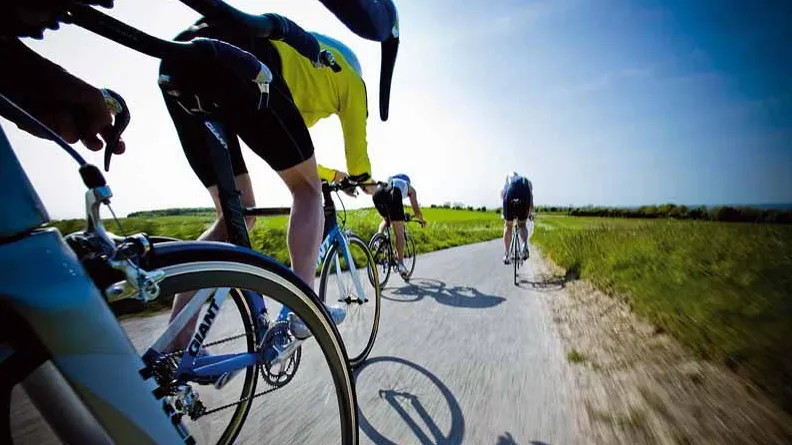Sportives are among the most exciting and satisfying events to take part in on two wheels. They’re also extremely demanding. Get it right and your day will go like a dream – you’ll enjoy fantastic riding, good company and the satisfaction of a job well done.
Get it wrong and there’s a whole world of pain coming your way. The difference between the two outcomes is in the preparation.
For the past decade, Koolstof Coaching have been helping cyclists of all abilities reach their goals, from novice sportive riders to professionals. Using expertise gained from more than 30 years of competitive cycling, founders Julius Jennings and John Bennett have compiled a comprehensive range of training resources.
We asked Julius to share his top sportive training techniques…

Preparing for sportives properly can make the event itself more enjoyable
Julius's top 11 tips for sportive fitness:
1. Build your engine size with endurance – the bigger your aerobic engine, the higher you can raise your power levels and speed. Lack endurance and you'll get tired very quickly. This doesn't mean doing four hours on your first ride, but gradually increasing duration from an hour and a half to four hours over the duration of your training plan.
2. Develop an economical speed, teaching your muscles to work together efficiently at a range of cadences, from 60-150rpm. The more efficient you are, the faster you will go. Cadence sessions train your legs and body to be able to ride efficiently at varied speeds. When you're riding your sportive, you'll need to be able to pedal fast down hills at over 100rpm, and slowly up a hill at 80rpm, so prepare for both.
3. Increase your force by practising seated hill climbs, otherwise you’ll suffer into a headwind! Seated hill climbs are useful for three reasons:
- They boost strength for better climbing and riding into headwinds. Think of it like weight training on the bike, for the legs.
- They help you build up your descending skills once you're on the other side of the climb.
- At low speed and low cadence you can work on your pedalling style.

Working on different areas with varying sessions will improve your overall fitness
4. Tempo rides are key to sportive success. They train the muscles to keep going at exactly the pace you'll be setting in your event, so don't miss these sessions out. You can do tempo rides both on the road or on a turbo trainer.
5. Develop muscular endurance. Many people with great potential power are unable to maintain it for more than a few minutes.
6. Work on your power, with very short, intense intervals of 15-30 seconds. Your body will tolerate acidosis (and the associated pain) better.
7. Develop anaerobic endurance by doing lactate tolerance intervals of one to six minutes.
8. Think about how functional you are on the bike in terms of your flexibility and core strength – both of these factors should be maintained throughout the year.
9. Psychology can have a big impact on sportive performance – our heads probably count for 70 percent of our performances. Get a better outlook and you’ll be more focused and motivated.
10. Rest and recover. You don’t get fitter when you’re riding, you get fitter when you recover afterwards, which is why you need to have at least one day without exercise every week. You should up that number more if you overdo it. Make sure you have one easy week every month, too.

Rest and recovery is a key element to successful training
11. When you're preparing for a sportive, it's worth bearing in mind what you shouldn't be doing as well as what you should. We asked Julius for five training mistakes he recommends avoiding:
1. Doing too many miles too soon.
2. Doing high intensity too soon.
3. Not resting properly.
4. Not doing enough miles or intensity training when it counts.
5. Not working on limiters. These are training abilities that are holding back your performance. For example, if you're good on hills you should work on flat speed.

